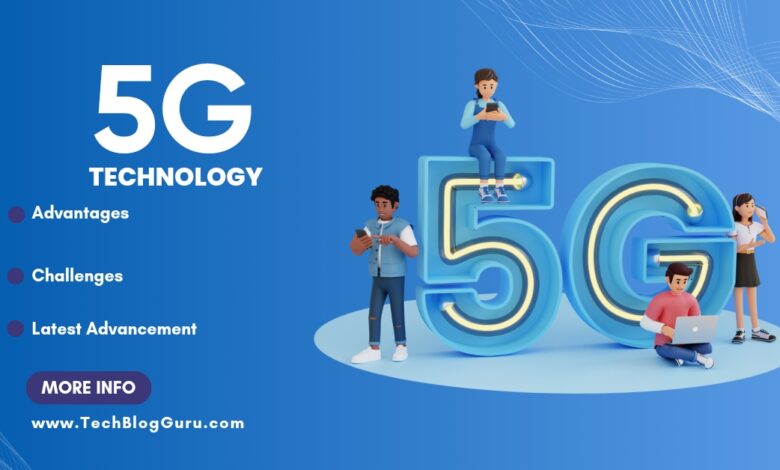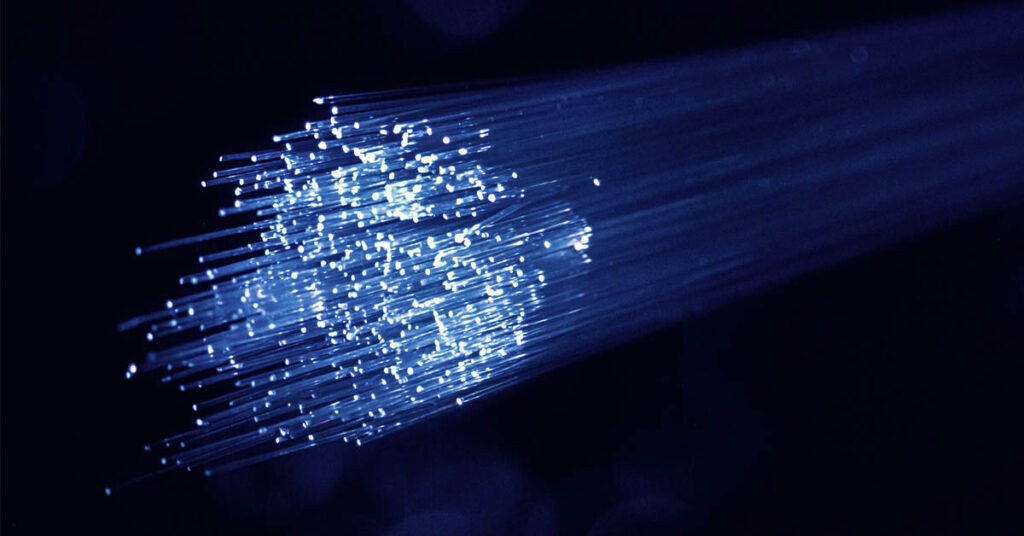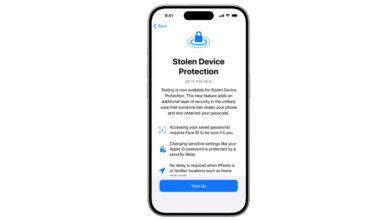5G Technology: Explore the Benefits, Challenges, Applications, & Latest Advancements.

The new 5G technology is changing how we connect and communicate. It’s not just about faster downloads or cat videos. This article looks at what 5G can do and how it affects different industries.
The advanced 5G wireless technology, featuring improved access methods like BDMA (Beam Division Multiple Access) and FBMC (Filter Bank Multi-Carrier Multiple Access), will smoothly take over from the fourth generation (4G) wireless technology. 5G won’t just be quicker than the existing 4G; it could also transform industries like manufacturing, automotive, health care, and energy. It will facilitate the shift from wired to wireless connections across various industrial settings.

Table of Contents
What is 5G Technology and How it works?
What is 5G Technology?
5G Technology is the Next Generation of Cellular Networks.
- Speed:
- 5G isn’t just faster; it’s much more secure and stable compared to 4G.
- Latency:
- Data moves swiftly from one point to another with minimal delay, making responses quicker.
- Key Numbers:
- 1,000 times higher mobile data volume per area
- 100 times more connected devices
- 100 times higher user data rate
- Ten times longer battery life for low-power massive-machine communications
- Five times reduced end-to-end latency.
How Does 5G Technology Works?
To achieve its incredible speeds, 5G uses different bands on the radio spectrum, such as low- and midbands (below six gigahertz) and revolutionary millimeter waves (30 to 300 gigahertz). These millimeter waves were traditionally used for satellite communication and radar systems. Cell phone companies started introducing 5G in 2019, and its acceptance is rapidly growing worldwide. In the United States, 5G coverage is already extensive, and billions of subscribers are expected by 2025.
Who invented 5G?

No single company or individual owns 5G, but many companies in the mobile world are helping to make 5G a reality. Qualcomm has been a big part of creating the essential technologies that push the industry forward and form 5G, the upcoming wireless standard.
Innovative Applications
5G affects many different areas.
Enhanced Mobile Broadband
- Watching super clear videos while you’re out and about
- Feeling like you’re really in a virtual reality
- Using fancy stuff that works really fast
Mission-Critical Control
- Making sure things work perfectly when time is super important.
- Like keeping cars safe, medical tools working right, and more.
- 5G always stays strong to make sure it works well.
Internet of Things
- Lots more devices getting connected all the time.
- Like smart fridges, sensors in factories, and other stuff.
- 5G lets lots of things connect without using much power.
Advantages and Disadvantages of 5G Technology
| Advantages | Disadvantages |
|---|---|
| 1. Faster data speeds | 1. Higher infrastructure costs |
| 2. Lower latency for real-time tasks | 2. Limited coverage in rural areas |
| 3. Supports more connected devices | 3. Potential health concerns |
| 4. Enables advanced technologies | 4. Requires new compatible devices |
| 5. Enhances IoT and smart devices | 5. Security and privacy risks |
| 6. Promotes innovation and economic growth | 6. Environmental impact |
What are some challenges of 5G Technology?

Despite its potential advantages, 5G technology encounters numerous challenges. Let’s explore the challenges.
Network Security
Because 5G networks are complicated and rely on software, they have new weaknesses. It’s really important to make sure they’re safe from cyberattacks.
Interference and Spectrum Management
Making sure there’s enough space for 5G and that it doesn’t mess up other networks is hard. We need to plan carefully so it can work alongside other wireless technologies.
Infrastructure Cost
Setting up and improving 5G stuff costs a lot. Putting in small cells, fixing up old towers, and laying fiber-optic cables need a bunch of money.
Network Construction
Putting up 5G networks means building stuff like towers, getting permits, and working with local authorities. We have to figure out how to deal with the logistical problems.
Ecosystem Availability
For 5G to be really good, lots of different devices, apps, and services need to work well together. Getting everyone to use it and making sure it works with different industries is tough.
Regulatory Approvals
Getting permission to set up 5G stuff takes a while. We have to make sure it’s safe, doesn’t hurt the environment, and is good for everyone.
Health Concerns
Some people worry that being around more electromagnetic stuff might not be good for health. Scientists are still checking if there are any health problems with 5G.
Digital Divide
Even though 5G says it will connect everyone, some places might not get it. Places like the countryside, poorer countries, and places where not many services are available might not get 5G as quickly.
What is the difference between 4G and 5G?

The table below shows how 4G and 5G technology are different in terms of things like how fast they are, how long it takes for data to travel, what frequencies they use, how many devices they can handle, what they’re used for, where they’re available, and how many people use them.
| Aspect | 4G Technology | 5G Technology |
|---|---|---|
| Generation | Fourth generation (4G) | Fifth generation (5G) |
| Data Speed | Offers fast data speeds | Provides ultra-fast speeds for downloads and streaming |
| Latency | Higher latency compared to 5G | Lower latency for responsive applications |
| Frequencies Used | Primarily uses frequencies below 6 GHz | Utilizes a mix of radio waves and high-frequency millimeter waves (around 30 GHz or more) |
| Capacity | Limited device capacity | Supports massive device capacity and IoT applications |
| Use Cases | Supports video streaming, web browsing, and file downloads | Enables enhanced applications, IoT, and mission-critical control for various industries |
| Deployment Status | Widely deployed and established | Adoption is increasing but may vary by region |
| Adoption | Well-adopted and widely available | Adoption is increasing, but may vary by region |
Conclusion
In Conclusion, 5G technology has the potential to change how we connect and do things. It’s really fast and can handle lots of devices at once. But, we need to figure out how to pay for it, make sure everyone can use it, and be careful about any health worries. As we keep making 5G better, it’s important to work together, be creative, and use it in a way that’s good for everyone.
You Might Also Like To Read
Securing Steady Income: Meta Stock Dividend Offers Shareholders a $0.50 Quarterly Payout!
From Revenue to Innovation: Apple’s First Quarter Results Revealed (EPS) of $2.18
FAQ’s
Are there any health concerns associated with 5G?
The health effects of 5G are still being studied. While some people have raised concerns about potential risks associated with increased exposure to electromagnetic radiation, regulatory agencies, and health organizations continue to assess and monitor the safety of 5G technology
When will 5G be available everywhere?
5G availability varies by region and country. While some areas already have 5G coverage, others are still in the process of rolling out the technology. It may take several years for 5G networks to be widely available globally.
What are the benefits of 5G technology?
Some benefits of 5G include faster download speeds, reduced latency for real-time applications, support for a massive number of connected devices, and the potential to enable innovative technologies like autonomous vehicles and remote surgeries.
What is 5G technology?
5G is the fifth generation of wireless technology for cellular networks. It promises faster speeds, lower latency, and the ability to connect a massive number of devices simultaneously.
How fast is 5G compared to 4G?
5G is significantly faster than 4G. While actual speeds may vary, 5G has the potential to deliver download speeds of up to 10 gigabits per second, which is much faster than the maximum speeds of 4G.




